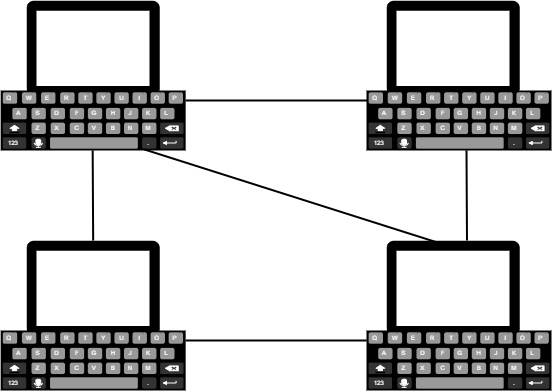
 Data Structure
Data Structure Networking
Networking RDBMS
RDBMS Operating System
Operating System Java
Java MS Excel
MS Excel iOS
iOS HTML
HTML CSS
CSS Android
Android Python
Python C Programming
C Programming C++
C++ C#
C# MongoDB
MongoDB MySQL
MySQL Javascript
Javascript PHP
PHP
- Selected Reading
- UPSC IAS Exams Notes
- Developer's Best Practices
- Questions and Answers
- Effective Resume Writing
- HR Interview Questions
- Computer Glossary
- Who is Who
What is Computer Network Architecture?
A network model represents the organization of multiple computers in a network. It describes how individual computers are interconnected in a network.
The computer network architecture is as follows −
Centralized Computing Architecture
In centralized computing architecture, one powerful computer is used to serve one or more low powered computers. In the centralized model, the nodes are not connected; they are only connected to the server.
The centralized computing architecture contains the following −
- All processing holds a function in the central, mainframe computer.
- Terminals are linked to the central computer and operation just as input/output devices.
- Networks can be employed to interconnect at least two mainframe computers. Terminals relate only to the mainframe, never to one another.
Distributed Computing Architecture
Distributed architecture interconnects one or more personal computers known as nodes. It allows various features such as file sharing, hardware sharing or network sharing. In the distributed model, the nodes can handle their data and depend on the network for administration other than data processing.
For example, a network of Window 2000 can have a computer that is regarded as a Print server. The print server would handle all the printing jobs of the network.
Distributed computing architecture contains the following −
- Various computers are efficient in performing independently
- Tasks are finished locally on multiple computers.
- Networks allow the computers to transfer data and service but do not support processing assistance.
Collaborative Computing Architecture
The collaborative computing architecture is a mixture of centralized and distributed computing. In the collaborative model, the individual members of a network can process their user’s basic need.
For example, a database server such as MSSQL server or ORACLE server sees or handles all the database related processing of all the nodes of networks. But requests other than the database will be processed by the model.
Peer-to-Peer Architecture
In this architecture, there are no dedicated servers. All computers are similar and, therefore, are termed as a peer. Each of these machines functions both as a user and a server. This arrangement is applicable for environments with a finite number of clients (usually ten or less).

Advantages
- It is accessible to design and perpetuation.
- The network is not dependent on a precise computer.
- Linking new computers in a peer to peer network is significantly more straightforward.

